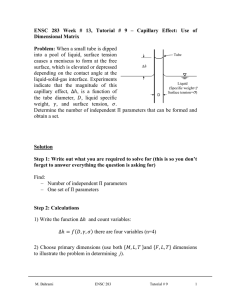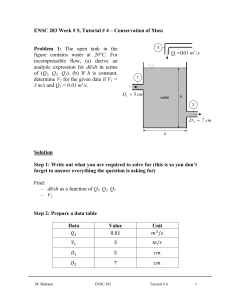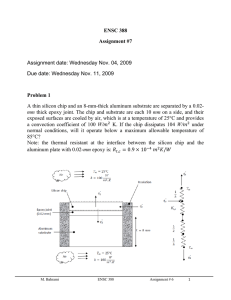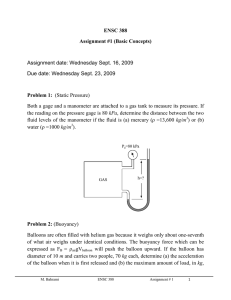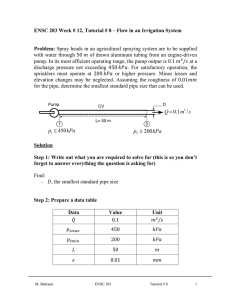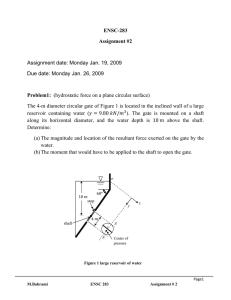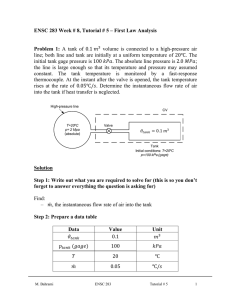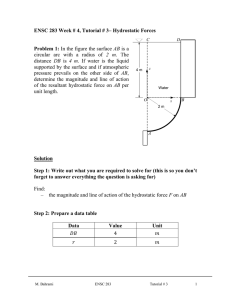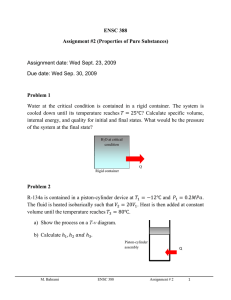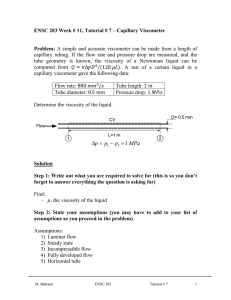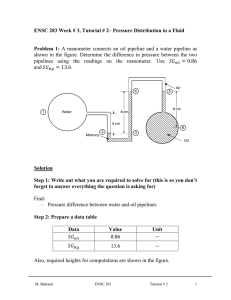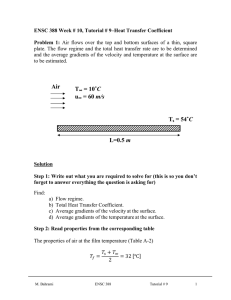ENSC 388 Week # 4, Tutorial # 3 – Energy... Problem 1:
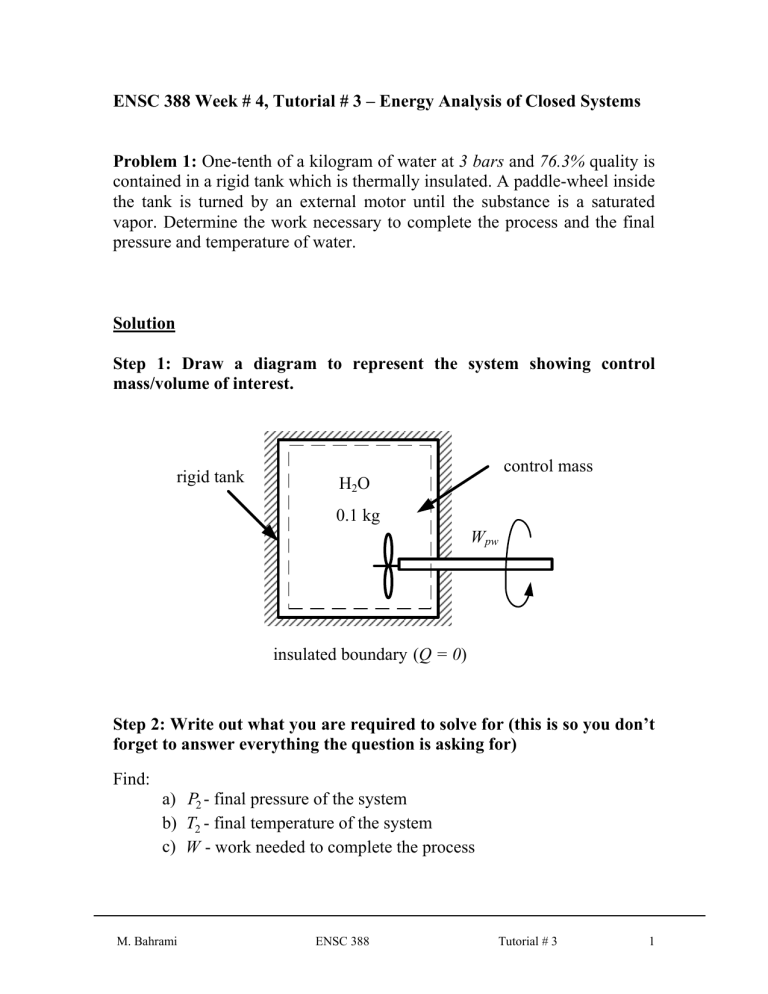
ENSC 388 Week # 4, Tutorial # 3 – Energy Analysis of Closed Systems
Problem 1: One-tenth of a kilogram of water at 3 bars and 76.3% quality is contained in a rigid tank which is thermally insulated. A paddle-wheel inside the tank is turned by an external motor until the substance is a saturated vapor. Determine the work necessary to complete the process and the final pressure and temperature of water.
Solution
Step 1: Draw a diagram to represent the system showing control mass/volume of interest. control mass rigid tank
H
2
O
0.1 kg
W pw insulated boundary ( Q = 0 )
Step 2: Write out what you are required to solve for (this is so you don’t forget to answer everything the question is asking for)
Find: a) P
2
- final pressure of the system b) T
2
- final temperature of the system c) W - work needed to complete the process
M. Bahrami ENSC 388 Tutorial # 3 1
Step 3: Prepare a data table
Data Value Unit m 0.1
P
1 x
1
3 [ bar ]
0.763 -
Step 4: State your assumptions (you may have to add to your list of assumptions as you proceed in the problem)
Assumptions:
1) Tank is thermally insulated.
2) Tank is rigid.
Step 5: Calculations
This is a constant volume process in a closed system (
/ m
const .
); therefore, the initial specific volume will be equal to the final specific volume. The T
diagram for the process can be shown as:
T
T
2
2
P
2
P
1
3 bar
T
1
1
1
2
For each state, two independent properties are needed. At initial state (1), the pressure and quality are known.
Since 3 bar = 300 kPa , from Table A-5 :
M. Bahrami ENSC 388 Tutorial # 3 2
P sat
P
1
300 kPa :
T
1
u u f g 1 f
1
1
fg 1
T
sat
0
0
.
.
133
1982 .
1
.
001073
60582
561 .
11
52 m kJ
kJ
m
3
C kg
3 kg kg
kg
1
f 1
x
1
(
g 1
f 1
)
0 .
001073
0 .
763 ( 0 .
60582
0 .
001073 )
0 .
4625 [ m
3
/ kg ] u
1
u f 1
x
1
561 .
11 u
fg 1
0 .
763
1982 .
1
2073 .
45 [ kJ / kg ]
(Eq1)
(Eq2)
At state (2), we have saturated vapor, and since the volume and the mass of the system remain constant, so
1
2
g 2
. From Table A-5 :
g 2
1
0 .
4625 [ m
3
/ kg ] :
T
2
P u
2
2
T sat
P u sat g 2
143 .
61
C
400 [ kPa ]
4 [ bar ]
2553 .
1 [ kJ / kg ]
The energy balance for a closed system can be expressed as:
Q
W
U
Since the tank is thermally insulated, Q
0 ; therefore,
W
U
0 .
1
m
u
2
u
1
2553 .
1
kJ kg
2073 .
45
kJ kg
47 .
965 kJ
(Eq3)
(Eq4)
M. Bahrami ENSC 388 Tutorial # 3 3
The negative sign in the value of the work indicates that the work is done on the system.
Step 6: Concluding Statement
The final temperature and pressure of the system are 143.61°C and 4 bar , respectively. Also, 47.965 kJ work is necessary to do on the system to complete the process.
M. Bahrami ENSC 388 Tutorial # 3 4
